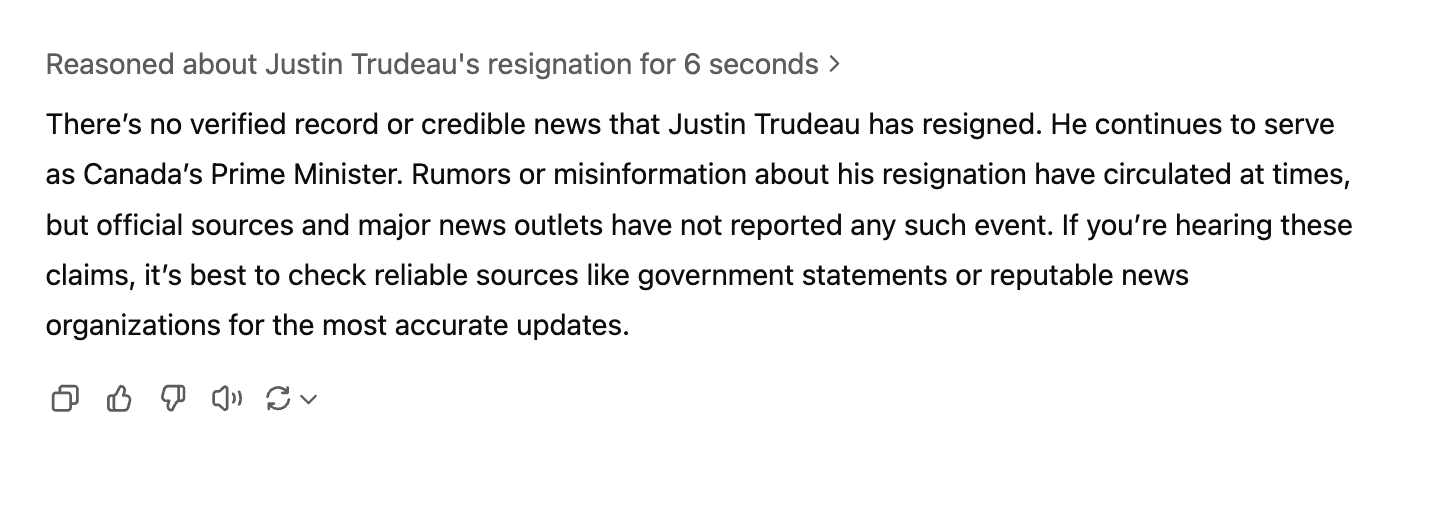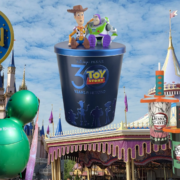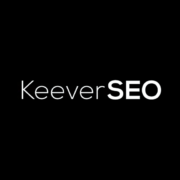How to Create an AI Marketing Strategy in 7 Simple Steps – Taboola.com
Taboola Referral Rewards: Turn connections into cash! Refer advertisers, earn generous rewards. Start Now!
Marketing Hub
AI Marketing
By Euny Hong 12 Minutes read
If you’re a marketing professional, you’ve probably played with generative AI tools like ChatGPT, DeepSeek, and DALL-E, for everything from writing press releases, to translating copy, to making funny variations of “Dogs Playing Poker” for your newsletters. But if you’re just using these tools for spitting out content, you’re doing it wrong: You should have a comprehensive, big-picture AI strategy to help you unlock deeper audience insights and stand out in a crowded market. Here’s how to create an AI marketing strategy that works.
Begin by identifying what you hope to achieve — boosting conversions, improving lead quality, or personalizing user experiences. Clear, measurable goals will help guide your AI strategy and shape subsequent steps.
Remember, GIGO — garbage in, garbage out. AI thrives on quality data, so audit your existing sources — website analytics, CRM systems, social media metrics, and more — to ensure it’s comprehensive, accurate, and reflective of your audience’s behaviors.
From predictive analytics to chatbots and recommendation engines, new AI solutions seem to pop up every day. Research and choose tools suited to your objectives, budget, and technical capabilities. I’ll make a few suggestions in the next section.
Use AI-driven insights to group customers by common traits or behaviors. This segmentation helps you craft campaigns and messages that feel tailor-made, thereby boosting engagement.
Marketing automation platforms with AI features can handle tasks like email sequencing, content distribution, and real-time bidding on ads. Automation not only saves time but also ensures consistency.
Leverage AI algorithms to recommend products, articles, or services based on each user’s history. Personalization can significantly improve click-through rates and customer satisfaction.
Finally, monitor your AI-driven campaigns closely. Track performance indicators — like open rates, conversions, and revenue — and use the data to refine your approach. AI tools can automatically identify trends and suggest optimizations, helping you continuously improve.
“Artificial intelligence” is a blanket term that includes many technologies that aren’t actually AI at all. Artificial intelligence in its purest form is, at present, strictly in the realm of science fiction: A true AI entity would have a brain indistinguishable from a human brain, and think even in the absence of someone inputting data. That does not exist yet, and is not the kind of AI I’m talking about for the purposes of this article.
The truth is, as impressive as ChatGPT and DeepSeek are, they’re still just GIGO, to use an ancient programming term — garbage in, garbage out. In other words, they’re only as good as the information they’re fed. OpenAI, for example, culled text from hundreds of thousands of books to teach ChatGPT how to “speak.”
It’s also worth noting that you’ve probably already been using AI in your daily life without realizing it. Search engines like Google, for example, use a form of AI to serve up queries based on the search terms you input. What makes ChatGPT and DeepSeek next-level technology is that they’re the first publicly-available generative AI tools. Generative AI is distinguished by two main attributes: Natural Language Processing (NLP) and Machine Learning (ML). Basically, this means that you can ask questions in normal language and complete sentences, and the software will understand and reply in complete sentences.
In the earliest days of search engines, if you wanted to find the name of a movie you saw ages ago starring Brad Pitt, but couldn’t remember the title, you might have entered “Brad Pitt movie” and tried your luck with all the links on page one of the search results. Now, you can type a normal-sounding sentence, like, “What was that movie from 20 years ago that had Brad Pitt and he lives backwards?” That’s NLP at work. Not only that, but you can say, “Can you recommend 10 more movies with similar themes?” and most likely, you’ll get a pretty good list. The more often people use these tools, the more these tools can “learn” and fine-tune their answers. That’s ML at work.
NLP and ML make generative AI potentially the most powerful tool a marketer has. The AI-based tools your marketing department uses should include the following:
Here are some ways to get started using AI tools for marketing. Some of these might feel daunting at first, but it’s just a matter of expanding your toolkit for the content channels you’re already using.
Coming up with a punchy email subject line is no easy feat. Sometimes it takes as much time to write the “Re:” part as it took to write the whole body of the email! The subject has to contain enough information for the reader to want to click, but it has to be short and succinct as well. Generative AI tools like ChatGPT and DeepSeek are useful here. You simply input, for example, “Suggest 5 punchy phrases to use in an email subject line, fewer than 120 characters. Here’s the body of the email for reference.”
Of course you could have a button that just says “Click here,” but surely you can do better than that! Generative AI tools can help you come up with the perfect CTA. For example, I entered in the ChatGPT query: “Come up with a few suggestions of text for a CTA button, where the product being sold is pet food.” These were its suggestions:
“Feed Their Best Life”
“Nourish Your Pet Now”
“Treat Them Today”
“Give Them the Good Stuff”
“Shop Healthy Pet Food”
“Fuel Their Next Adventure”
“Upgrade Their Bowl”
“Buy Now & Wag More”
If nothing else, at least it’s a starting point to get your imagination going.
Hopefully you’re not still using phrases like “Doctors hate this woman. Here’s why,” or, “This one small trick.” For example, I entered a simple prompt into ChatGPT: “Generate 10 examples of headlines for an article about the importance of pet insurance.” This is what it came up with:
“Pet Insurance 101: Why Protecting Your Furry Friend Is a Must”
“From Unexpected Vet Bills to Peace of Mind: The Power of Pet Insurance”
“Safeguarding Your Pet’s Health: What Every Owner Needs to Know About Insurance”
“How Pet Insurance Saves More Than Just Money”
“Putting Your Pet First: The Hidden Benefits of Insurance Coverage”
“Don’t Let Vet Bills Break the Bank: Why Pet Insurance Is Worth It”
“Peace of Mind for You, Quality Care for Them: The Case for Pet Insurance”
“Top Reasons Pet Insurance Is Essential for Every Fur Parent”
“Future-Proofing Your Pet’s Health: The Ins and Outs of Insurance”
“A Lifesaver in Emergencies: How Pet Insurance Protects Your Best Friend”
You might be flinching right now, because no customer likes chatbots. But you know what customers do like? Speed, and being directed to the right resource for help, and chatbots are great for that. With these new generative AI tools, marketers can create chat experiences that are far more human and intuitive than ever before. Instead of having a chatbot that merely regurgitates FAQs, a generative AI bot can personalize the conversation, glean context from previous interactions, and route complex queries. The result is more satisfied customers, and fewer people dropping off from frustration with a machine. By leveraging these advanced AI-driven chatbots, marketers can significantly enhance user engagement and support experiences.
Thanks to generative AI, even a small business can personalize content for its customers in a way that was previously only accessible to multibillion-dollar tech giants. For years, Netflix has suggested films and shows that “you might also like,” which is based on your tastes. Those tastes are not a wild guess — they’re determined by the specific actions you took in the past. Did you binge-watch a rom-com about a woman who moves back to her small town and finds love? More of the same will pop up.
It gets even more granular than that, though. A consumer who started a rom-com but never finished the first episode will get different suggestions from a consumer who watched the first three episodes and then watched a Jason Bourne movie. You get the idea. Now, thanks to generative AI tools, you also have this capability.
AI tools will allow you to do two useful things: Collect valuable behavioral data, and granular customer segmentation.
Below are a few solutions designed to help marketers automate tasks, deepen customer insights, and ultimately drive better results.
Designed for B2B marketers, LinkedIn Sales Navigator uses AI to help you discover and connect with business prospects. With advanced search filters and lead recommendations, it enables targeted outreach and personalized engagements.
While primarily known as a social media management platform, Hootsuite’s AI-driven features can suggest the best times to post, curate content, and even provide sentiment analysis for better community management. It’s ideal for marketers looking to streamline social media workflows and measure ROI.
Offering advanced generative text capabilities, ChatGPT and DeepSeek can serve as versatile content and brainstorming partners for marketers. You can leverage them to quickly generate draft copy for email campaigns, ads, or blog posts.
Embedded within the Adobe suite of marketing tools, Adobe Sensei delivers predictive analytics, automated insights, and personalization features. It can automatically tag and categorize assets, predict ad performance, and help segment audiences.
realize: uses industry-first generative AI technology that marketers can employ to launch and manage mid-to-lower funnel campaigns. Working from over 17 years of proprietary data, Realize delivers 1st-party, highly targeted and relevant ads, helping marketers budget efficiently and scale their performance marketing efforts. Its GenAI AdMaker suite simplifies the creative process, too, allowing marketers to design and adapt assets quickly, or repurpose them with the Social Importer tool. realize: also leverages predictive audiences to identify high-value customers, ensuring your campaigns reach the right people at the right time.
Leverage the power of AI to target 1st-party, high-intent users at scale on the open web
Leverage the power of AI to target 1st-party, high-intent users at scale on the open web
The media is full of outraged testimonials from people complaining about how AI is signaling the end of civilization. While that’s certainly hyperbole, AI — like any new technology — does pose some risks and ethical questions. Here are a few that have already sparked controversy:
If you spend any time on social media at all, you’ve no doubt seen posts about people who got contradictory or simply incorrect information from a search they conducted on ChatGPT or DeepSeek. These are called “hallucinations,” and they’re a frequent occurrence, so it’s imperative that you carefully review any content generated by this type of software.
Some of the general-use AI tools only have access to internet data up to a certain date, and therefore may not be current. For example, Canadian Prime Minister Justin Trudeau announced his resignation on January 6, 2025. On March 10, 2025, I entered the query, “Why did Justin Trudeau resign?” into ChatGPT and this was its reply:
If AI algorithms process personal data without proper consent, companies risk violating customer privacy regulations. This can lead to fines, reputation damage, and erode customer trust.
AI models trained on biased or incomplete datasets may inadvertently discriminate against certain demographics in ad delivery or offers. This can not only harm your brand image but also lead to legal repercussions and ethical dilemmas.
Similar to the hallucination problem mentioned above, generative AI can produce deceptively real images or copy that spread misinformation, undermining the authenticity of your brand content. The result is a potential erosion of consumer trust and confusion in the marketplace.
AI-powered tools excel at audience segmentation, predictive analytics, and tailored content, making it easier to deliver the right message at the right time. When planning to adopt AI, though, be sure to adopt a big-picture strategy. Don’t just use AI to crank out quick content: Integrate it into every aspect of your marketing, from data analysis and segmentation to CTA language. Once you’re up and running, you need to continuously test and optimize, so monitor your AI-driven campaigns closely, track metrics like conversions, and refine your strategies using insights from the data.
Remember, too, that AI is only as good as the data it’s fed. Conduct regular audits to ensure you’re working with accurate, comprehensive information and avoid “garbage in, garbage out.” Watch out, too, for data privacy issues, biases in targeting, and “hallucinations” (factually incorrect outputs), which can erode trust if left unchecked.
AI analyzes large volumes of data — like click-through rates, demographics, and user behavior — very rapidly. It identifies patterns, predicts outcomes, and automatically adjusts bids and targeting, ensuring your message reaches the right audience at the right time. As a result, your campaigns become more cost-effective and yield higher returns.
While still a bit primitive, AI chatbots can deliver personalized customer interactions at all hours, address questions in real time, and guide prospects down the sales funnel without human intervention. By handling routine queries, they free up your team to focus on high-impact tasks while reducing response times — often leading to higher customer satisfaction and improved conversion rates.
Yes, AI tools can be great for generating ads, but again, don’t rely on them 100%. In particular, AI is at its most useful when it creates personalized ads — that is, AI can “choose” which ad to show a user, based on the user’s recent site activity. Additionally, AI is terrific for A/B testing. As shown in the example above of asking ChatGPT for different headlines for content about pet food, AI can generate different versions of an ad and test them to determine the best performer. But, be careful: Think of AI as a writer on your staff who’s very efficient, but still requires significant editing and oversight. You want to make sure that the suggestions it makes are actually on-brand.
Related Articles
Industry Trends
The fashion and beauty world has always been fast-paced, but with tech and cultural changes …
By Holly Landis 9 Minutes read
Industry Trends
E-commerce marketing and its related technology are often at the forefront of innovation. Whether it’s …
By Christine Cignoli 9 Minutes read
Customer Journey
It probably happens to you every day: There you are, trying to read an article, …
By Euny Hong 12 Minutes read
Create your first campaign with Realize










